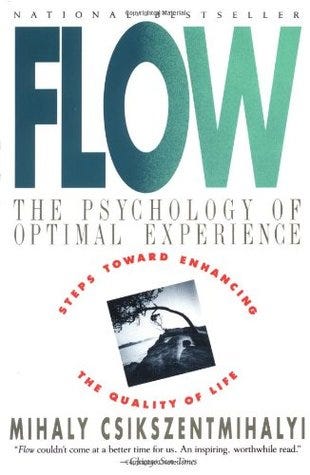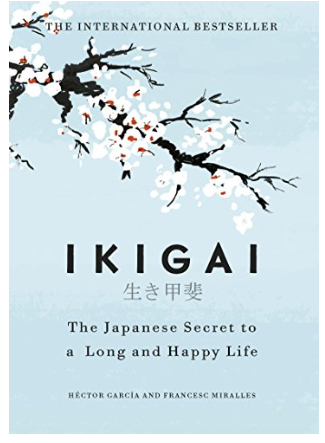How to Focus on One Thing at a Time for Best Results
Get the most out of each task.

Get the most out of each task.
There must have been times in your life where you were so completely immersed in the task you were doing, that you lost track of time. When the past and the future ceased to exist, and only the present mattered.
For example, you might have started painting some scenery, and before you realised, the day was over, and it was already dark outside. Or maybe you settled in with a book, and by the time you were done reading, it was already 5 AM and time to start a new day.
The opposite is also true.
You must have been through times when you are doing something you don’t particularly enjoy, like attending a boring lecture or sitting in a meeting you have no interest in, and you look at your watch after what felt like hours and realise only five minutes have passed.
As Albert Einstein famously quoted:
“Put your hand on a hot stove for a minute and it seems like an hour. Sit with a pretty girl for an hour, and it seems like a minute.”

The Hungarian-American psychologist, Mihaly Csikszentmihalyi, discusses the state of being completely engrossed in what you’re doing and calls this state as “flow”.
In his book Flow: The Psychology of Optimal Experience, Csikszentmihalyi defines flow as — “The state in which people are so involved in an activity that nothing else seems to matter; the experience in itself is so enjoyable that people will do it even at great cost, for the sheer sake of doing it.”
When you are in “flow”, your mind is in order, and you can focus on the task at hand without any distractions.
Researcher and academic at DePaul University, Owen Schaffer, has applied Csikszentmihalyi’s concepts and developed a 3-strategy model to achieve flow and get the most out of any task you set your mind to.
In this article, I am discussing the key attributes of the Schaffer model that will help you find flow in your work and get the most out of the task at hand.
Strategy 1: Stretch Your Skills
If you choose a task that is too easy, you would get bored and become apathetic about completing it. On the other hand, if you select a task that’s too difficult and beyond your current skill set, you will feel frustrated and be ready to give up.
The ideal is to find a middle ground and look for a task challenges your abilities and makes you push yourself, but it’s not so easy that you can close your eyes and finish it without putting in any effort.
When you are working on your next project, add a little challenge that pushes you out of your comfort zone. If you’re a writer, this could mean challenging yourself to write a genre or scene you’ve never attempted before. If you are a video maker, try and portray topics you have never touched before, or add some edits that you haven’t worked with yet.
When you stretch your skills, you get more pleasure out of doing the task. The end success also tastes a lot sweeter than it would if you had simply been repeating your earlier strategy and doing what you usually do without pushing yourself.
Strategy 2: Have A Clear End Goal
Before you start your work in earnest, it is imperative to reflect on what you hope to achieve from the task. Here is a list of questions you can ask yourself that will help you get some clarity:
- What is my objective for today’s writing/painting/content creation session?
- By when do I hope to get this done?
- What are the things I need to do today (or in the next hour) to meet the deadline?
Don’t obsess
A clear objective will help you achieve the state of flow, but you should also learn to let it go. Once the journey has started, don’t obsess too much over the end goal as the process (the present) is just as important.
For example, if your end goal is to win the Pulitzer Prize from your next book, if you get too caught up in picturing how wonderful winning the award would feel and how proud your parents will be, you will lose focus from the task at hand: writing.
In the same way, irrespective of the promised happiness of the end goal, focus on the present, rather than living in dreams of the future. As Mother Teresa quoted:
“Yesterday is gone. Tomorrow has not yet come. We have only today. Let us begin.”
Strategy 3: Don’t Multitask
With so many distractions competing for our attention, the inability to focus on one task is probably the greatest challenge our generation faces today. It is a common misconception that combining tasks saves time, but there have been studies that prove otherwise.
Research proves that when a person says they are multitasking, in reality, all they are doing is switching back and forth between several tasks quickly. This not only lowers their productivity but also makes them feel exhausted without achieving significant results. They end up spending all their energy on switching between tasks, rather than on completing one task with utmost diligence.
Basically, if you multitask, you would be more prone to making more mistakes, waste time, and remember less of what you have done.
Requirements for flow
Csikszentmihalyi suggests that there are two things that are imperative if you hope to focus on the task at hand, namely-
- A distraction-free environment
- Complete control over what you are doing at each moment
A study by Clifford Nass, a psychology professor at Stanford University established that people who regularly multitask have trained their brains to pay attention to every stimulus, regardless of its relative importance.
Thus, while you are working on something important, you would be more likely to get distracted by a trivial task like the beeping of a WhatsApp message. Because your brain assigns it equal importance, you will be compelled to pause what you’re doing and reply to the message, thus breaking your state of flow.
Closing Notes

I first read about Csikszentmihalyi’s concept of flow and Schaffer’s model from the book Ikigai: The Japanese Secret to a Long and Happy Life by Hector Garcia and Francesc Miralles. This is a beautiful book that ascribes the name ikigai to your purpose in life — the pursuit of which gives you pleasure and a solid reason to get out of bed each morning.
Any person can find their Ikigai after some dedicated self-introspection. In fact, trying to find the tasks that let you achieve the state of flow and give you satisfaction could be a great way of finding your purpose. In short, Ikigai can be summed up as the intersection of the following-
- Something you enjoy doing.
- Something you are good at.
- Something the world needs.
- Something you can be paid for.
When you find your Ikigai and know how to achieve the state of flow in its pursuit, your life will automatically feel more purposeful. After all, as Bertrand Russell quoted-
“To be able to concentrate for a considerable amount of time is essential to difficult achievement.”
Schaffer’s 3-strategy model of creating a space and time free of distractions is designed to increase your chances of reaching a state of flow and help you get in touch with your Ikigai. Practise it for a few days and observe the changes in your outlook toward life.
For book reviews and recommendations, follow me on Goodreads.
